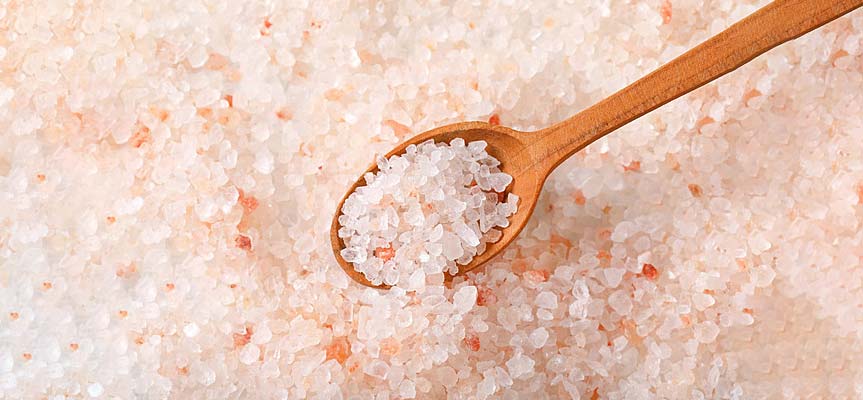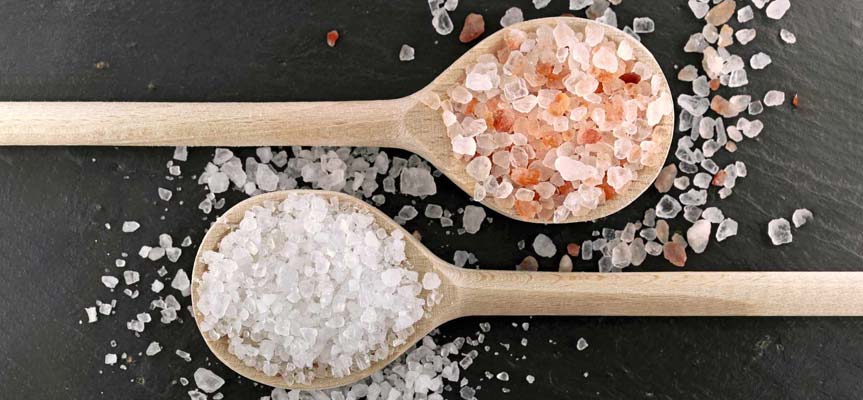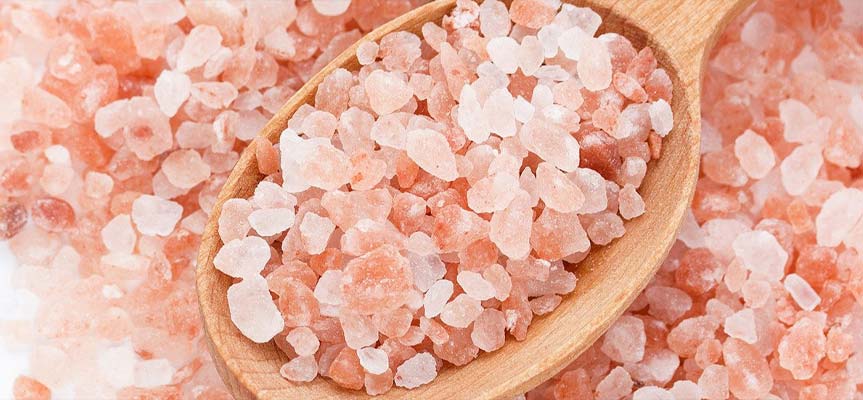Salt is one of the most widely used food additives globally, abundant in home kitchens, restaurants, and the food industry. Although salt is essential for proper bodily functions, excessive consumption can pose serious health risks. Examining salt consumption in Iran and comparing it with global data reveals that Iranians consume on average more than twice the amount recommended by the World Health Organization (WHO). This has raised significant public health concerns and motivated experts to seek solutions to reduce salt intake.
Salt Consumption Statistics in Iran
Salt consumption in Iran has shown a worrying trend in recent years. According to official reports from the Ministry of Health and academic research, the average daily salt intake per Iranian ranges from approximately 12 to 14 grams; this is nearly twice the WHO recommended limit of 5 grams per day.
These statistics indicate that Iranians consume more salt compared to many developed countries and even some regional neighbors. Studies also show that salt consumption is higher in large cities due to the widespread use of processed foods, fast foods, and additional salt in homemade meals.
One major cause of this high salt consumption is traditional eating habits and a cultural preference for salty foods such as various types of pickles and local dishes. Moreover, data indicate that hidden salt in industrial food products like bread, sausages, cold cuts, and factory-produced cheeses contributes significantly to the high salt intake.
Multiple studies have also demonstrated that salt consumption in Iran is roughly 2 to 3 times higher than the average in European and North American countries. In other words, this situation could expose the general population to serious health risks such as hypertension and cardiovascular diseases.
Comparison of Salt Consumption in Iran with the World
Looking globally, different patterns of salt consumption emerge. East Asian countries like China and Japan also have high salt intake, whereas European countries have managed to reduce consumption in recent decades by implementing sodium reduction programs.
The difference in salt consumption between Iran and other countries relates to factors such as taste preferences, cooking culture, and availability of processed foods.
WHO Recommendations on Salt
The World Health Organization emphasizes that to maintain cardiovascular health, sodium intake should not exceed 2 grams per day, equivalent to 5 grams of salt. This guideline applies to adults and is even lower for children. Public policies such as labeling the salt content on food products, reformulating bread recipes, and public education have proven effective worldwide.

Health Effects of Salt Consumption
Excessive salt intake is one of the primary contributors to serious health issues. Increased salt consumption is directly linked to elevated blood pressure, which is a key risk factor for cardiovascular diseases and strokes.
When we consume too much salt, the body retains large amounts of water to maintain water-electrolyte balance, leading to increased blood volume and consequently higher blood pressure. Over time, high blood pressure can damage blood vessel walls and increase the risk of heart attacks, strokes, and kidney failure.
High salt intake may also negatively affect bone health and increase the risk of osteoporosis, as the kidneys excrete more calcium to eliminate excess sodium.
Additionally, excessive salt can cause fluid retention and various types of swelling, disrupting daily life.
Recent studies have shown that even salt intake close to the recommended limit may cause high blood pressure in some sensitive individuals. Therefore, it is strongly advised that especially those with hypertension or heart diseases rigorously control their salt consumption.
Hidden Salt in Foods
One of the biggest challenges in controlling salt intake is the presence of hidden salt in processed foods. Many people assume that only the salt added during cooking or at the table counts towards their intake, but in reality, a significant portion comes from industrial food products.
Hidden salt exists in industrial breads, sausages, cold cuts, processed cheeses, canned foods, sauces, and even some beverages. Salt is added for various reasons including flavor preservation, increasing shelf life, and improving food texture.
Global statistics indicate that about 70% of people’s salt intake comes from processed and prepared foods, with only 30% coming directly from salt added during cooking or at the table.
In Iran, where consumption of processed and ready-made foods is rising, this issue becomes even more critical. Unfortunately, many consumers lack adequate awareness of the salt content in these products, leading to high hidden salt intake.
Raising awareness and educating the public about food labeling and identifying low-salt products can play an effective role in reducing hidden salt consumption.
Strategies to Reduce Salt Intake
Reducing salt consumption is a fundamental goal for improving public health and can lower the risk of many diseases. Here are some effective and practical strategies:
- Public Awareness and Education: Informing the public about the harms of excessive salt intake and teaching how to identify hidden salt in foods is essential. Media, schools, and health centers should actively participate.
- Reading Food Labels: Consumers should carefully read product labels and avoid buying items with high salt content.
- Reducing Salt Use in Cooking: Use less salt during cooking and replace it with natural spices and herbs.
- Avoiding Processed Foods: Limit fast food, ready meals, and canned foods, which usually contain high salt levels.
- Using Salt Substitutes: Employ potassium-based salts and low-sodium natural salts that offer better health benefits.
- Limiting Pickles and Salty Snacks: These foods are often very salty and should be consumed in moderation.
- Following WHO Recommendations: Adhere to WHO guidelines to keep daily salt intake below 5 grams.
Implementing these measures simultaneously can significantly reduce salt intake and improve community health.
Medical Benefits of Using Salt Substitutes
Salt substitutes, which typically contain potassium instead of sodium, have notable medical advantages. They can help reduce blood pressure and lower the risk of heart diseases.
Numerous studies have shown that replacing table salt with potassium salts significantly lowers systolic and diastolic blood pressure, especially in hypertensive individuals.
Additionally, potassium salt consumption raises blood potassium levels, aiding electrolyte balance and better heart function. Compared to high sodium intake, these salts have fewer side effects and can serve as supplements in low-salt diets.
However, potassium salts should be used cautiously, especially by people with kidney problems, as they may cause excessive potassium accumulation.

Potassium Salt Benefits for the Heart
Potassium salt, mainly composed of potassium chloride, has special properties beneficial for heart health. Potassium is a key element in regulating heart rate and muscle function.
Potassium intake helps maintain electrolyte balance and prevents blood pressure elevation. Research shows adequate potassium consumption can reduce blood pressure and thus decrease the risk of heart attacks and strokes.
Potassium salt can also mitigate sodium’s adverse effects and help maintain the elasticity of blood vessels. Therefore, it is recommended in the diets of individuals with heart diseases.
Moreover, potassium plays an important role in preventing fluid accumulation in the body, which otherwise puts pressure on the heart.
Role of Potassium in Blood Pressure Control
Potassium is one of the most important elements in the body for controlling blood pressure. It helps balance sodium levels and enables kidneys to excrete excess sodium via urine.
When potassium levels are sufficient, blood vessel walls become softer and more flexible, leading to lower blood pressure. Conversely, potassium deficiency can increase blood pressure and cause vascular constriction.
The WHO recommends a daily potassium intake of about 3.5 grams, achievable through sufficient consumption of fruits, vegetables, and potassium salts.
People on low-salt diets usually need to increase potassium intake to maintain electrolyte balance and control blood pressure.
Impact of Potassium Salt on Diabetes
Diabetes directly affects kidney function and electrolyte balance. Excess sodium intake in diabetic patients can cause hypertension and worsen heart diseases.
Potassium salt, as a healthy alternative to table salt, can help control blood pressure in diabetic patients and reduce the risk of cardiovascular problems.
Clinical studies have shown that potassium salts in the diets of diabetic patients improve kidney function and reduce inflammation.
Potassium also plays a vital role in regulating blood sugar and insulin sensitivity, essential for diabetes management.
However, due to the risk of potassium accumulation in patients with kidney problems, the use of potassium salts must be supervised by a physician.
Possible Side Effects of Potassium Salt
Despite numerous benefits, excessive potassium salt consumption can be dangerous for individuals with kidney disorders or specific heart diseases. Therefore, consulting a doctor before use is necessary.
Comparison of Potassium Salt with Sea Salt and Rock Salt
Potassium salt, sea salt, and rock salt all originate from different sources and have distinct properties:
- Potassium Salt: A compound of potassium and chloride, commonly used as a substitute for regular salt. It is beneficial for controlling blood pressure and reducing the harmful effects of salt.
- Sea Salt: Obtained by evaporating seawater, it usually contains natural minerals such as magnesium, calcium, and potassium, which provide therapeutic properties and better taste. However, its sodium content is similar to regular salt.
- Rock Salt: A type of mineral salt that generally contains many minerals and is less refined, but its sodium level does not differ significantly from table salt.
Overall, potassium salt is a better option for individuals who need to control their sodium intake. Sea salt and rock salt, due to their additional mineral compositions, have relative health benefits, but excessive consumption of them, like regular salt, can also be harmful.

The Role of Grownida Innovation and Creativity Center in Food Research
The Grownida Innovation and Creativity Center, through conducting research projects aimed at sodium reduction and developing healthy food products, strives to provide practical solutions to improve public health. The Grownida brand, combining nutritional science and industrial innovation, has produced products with lower salt content and higher nutritional value.
Conclusion
The level of salt consumption in Iran and worldwide is a critical and influential issue for public health. Excessive salt intake, especially in Iran where consumption rates exceed global standards, can lead to serious problems such as high blood pressure, cardiovascular diseases, and other disorders.
Recognizing hidden salt in foods and adopting strategies to reduce salt consumption—such as education, choosing low-salt products, and using salt substitutes like potassium salt—are fundamental steps in improving community health.
Potassium salt, with its specific properties, plays an important role in controlling blood pressure and heart health and can be a suitable replacement for regular salt in the diet, provided its use is medically supervised.
Given the importance of this issue, it is recommended that companies, entrepreneurs, and health and nutrition specialists increase their efforts in raising awareness and promoting cultural change to reduce salt consumption to a healthy and safe level.
If you would like more information about strategies to reduce salt intake and choosing salt substitutes, the Grownida Innovation and Creativity Center is ready to support and provide you with specialized consulting services.
Frequently Asked Questions
How much salt should we consume per day?
A maximum of 5 grams of salt per day for adults, according to the World Health Organization.
Why is excessive salt intake harmful?
Because it causes increased blood pressure, heart disease, kidney problems, and osteoporosis.
How much salt do Iranians consume?
About 10 to 12 grams per day, more than twice the recommended amount.
What is the difference between salt consumption in Iran and worldwide?
Salt consumption in Iran is higher than the global average and that of many developed countries.
What effect does salt have on blood pressure?
The sodium in salt causes water retention and increases blood pressure.

